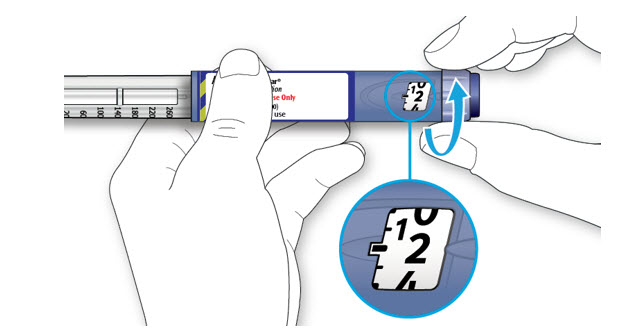FDA records indicate that there are no current recalls for this drug.
Are you a medical professional?
Trending Topics
Apidra Recall
Get an alert when a recall is issued.
Questions & Answers
Side Effects & Adverse Reactions
There is currently no warning information available for this product. We apologize for any inconvenience.
Legal Issues
There is currently no legal information available for this drug.
FDA Safety Alerts
There are currently no FDA safety alerts available for this drug.
Manufacturer Warnings
There is currently no manufacturer warning information available for this drug.
FDA Labeling Changes
There are currently no FDA labeling changes available for this drug.
Uses
APIDRA is indicated to improve glycemic control in adults and children with diabetes mellitus.
History
There is currently no drug history available for this drug.
Other Information
APIDRA® (insulin glulisine [rDNA origin] injection) is a rapid-acting human insulin analog used to lower blood glucose. Insulin glulisine is produced by recombinant DNA technology utilizing a non-pathogenic laboratory strain of Escherichia coli (K12). Insulin glulisine differs from human insulin in that the amino acid asparagine at position B3 is replaced by lysine and the lysine in position B29 is replaced by glutamic acid. Chemically, insulin glulisine is 3B-lysine-29B-glutamic acid-human insulin, has the empirical formula C258H384N64O78S6 and a molecular weight of 5823 and has the following structural formula:
APIDRA is a sterile, aqueous, clear, and colorless solution. Each milliliter of APIDRA contains 100 units (3.49 mg) insulin glulisine, 3.15 mg metacresol, 6 mg tromethamine, 5 mg sodium chloride, 0.01 mg polysorbate 20, and water for injection. APIDRA has a pH of approximately 7.3. The pH is adjusted by addition of aqueous solutions of hydrochloric acid and/or sodium hydroxide.
Sources
Apidra Manufacturers
-
Sanofi-aventis U.s. Llc
![Apidra (Insulin Glulisine) Injection, Solution Apidra Solostar (Insulin Glulisine) Injection, Solution [Sanofi-aventis U.s. Llc]](/wp-content/themes/bootstrap/assets/img/loading2.gif)
Apidra | Sanofi-aventis U.s. Llc
![Apidra (Insulin Glulisine) Injection, Solution Apidra Solostar (Insulin Glulisine) Injection, Solution [Sanofi-aventis U.s. Llc] Apidra (Insulin Glulisine) Injection, Solution Apidra Solostar (Insulin Glulisine) Injection, Solution [Sanofi-aventis U.s. Llc]](/wp-content/themes/bootstrap/assets/img/loading2.gif)
2.1 Dosage considerationsAPIDRA is a recombinant insulin analog that is equipotent to human insulin (i.e. one unit of APIDRA has the same glucose-lowering effect as one unit of regular human insulin) when given intravenously. When given subcutaneously, APIDRA has a more rapid onset of action and a shorter duration of action than regular human insulin.
The dosage of APIDRA must be individualized. Blood glucose monitoring is essential in all patients receiving insulin therapy.
The total daily insulin requirement may vary and is usually between 0.5 to 1 Unit/kg/day. Insulin requirements may be altered during stress, major illness, or with changes in exercise, meal patterns, or coadministered drugs.
2.2 Subcutaneous administrationAPIDRA should be given within 15 minutes before a meal or within 20 minutes after starting a meal.
APIDRA given by subcutaneous injection should generally be used in regimens with an intermediate or long-acting insulin.
APIDRA should be administered by subcutaneous injection in the abdominal wall, thigh, or upper arm. Injection sites should be rotated within the same region (abdomen, thigh or upper arm) from one injection to the next to reduce the risk of lipodystrophy [See Adverse Reactions (6.1)].
2.3 Continuous subcutaneous infusion (insulin pump)APIDRA may be administered by continuous subcutaneous infusion in the abdominal wall. Do not use diluted or mixed insulins in external insulin pumps. Infusion sites should be rotated within the same region to reduce the risk of lipodystrophy [See Adverse Reactions (6.1)]. The initial programming of the external insulin infusion pump should be based on the total daily insulin dose of the previous regimen.
The following insulin pumps1 have been used in APIDRA clinical trials conducted by sanofi-aventis, the manufacturer of APIDRA:
Disetronic® H-Tron® plus V100 and D-Tron® with Disetronic catheters (Rapid™, Rapid C™, Rapid D™, and Tender™) MiniMed® Models 506, 507, 507c and 508 with MiniMed catheters (Sof-set Ultimate QR™, and Quick-set™).Before using a different insulin pump with APIDRA, read the pump label to make sure the pump has been evaluated with APIDRA.
Physicians and patients should carefully evaluate information on pump use in the APIDRA prescribing information, Patient Information Leaflet, and the pump manufacturer's manual. APIDRA-specific information should be followed for in-use time, frequency of changing infusion sets, or other details specific to APIDRA usage, because APIDRA-specific information may differ from general pump manual instructions. Failure to follow APIDRA-specific instructions may lead to serious adverse events.
Patients administering APIDRA by continuous subcutaneous infusion must have an alternative insulin delivery system in case of pump system failure.
Based on in vitro studies which have shown loss of the preservative, metacresol and insulin degradation, APIDRA in the reservoir should be changed at least every 48 hours. APIDRA should not be exposed to temperatures greater than 98.6°F (37°C).
In clinical use, the infusion sets and the APIDRA in the reservoir must be changed at least every 48 hours [See Warnings and Precautions (5.8) and How Supplied/Storage and Handling (16.2)].
2.4 Intravenous administrationAPIDRA can be administered intravenously under medical supervision for glycemic control with close monitoring of blood glucose and serum potassium to avoid hypoglycemia and hypokalemia. For intravenous use, APIDRA should be used at concentrations of 0.05 Units/mL to 1 Unit/mL insulin glulisine in infusion systems using polyvinyl chloride (PVC) bags. APIDRA has been shown to be stable only in normal saline solution (0.9% sodium chloride). Parenteral drug products should be inspected visually for particulate matter and discoloration prior to administration, whenever solution and container permit. Do not administer insulin mixtures intravenously.
Login To Your Free Account


